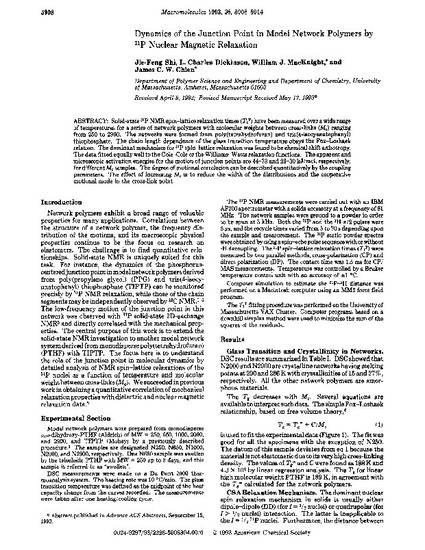
Article
Dynamics of the Junction Point in Model Network Polymers by (31)P Nuclear Magnetic Relaxation
Macromolecules
(1993)
Abstract
Solid-state 3lP NMR spin-lattice relaxation times (2'1~) have been measured over a wide range
of temperatures for a series of network polymers with molecular weights between cross-links (M,r)an ging
from 250 to 2900. The networks were formed from poly(tetrahydr0furan) and tris(4-isocyanatophenyl)
thiophosphate. The chain length dependence of the glass transition temperature obeys the Fox-Loshaek
relation. The dominant mechanism for 3lP spin-lattice relaxation was found to be chemical shift anisotropy.
The data fitted equally well to the ColeCole or the Williams-Watts relaxation functions. The apparent and
microscopic activation energies for the motion of junction points are 44-73 and 23-30 kJjmo1, respectively,
for different M, samples. The degree of motional correlation can be described quantitatively by the coupling
parameters. The effect of increasing M, is to reduce the width of the distributions and the cooperative
motional mode in the cross-link point.
Keywords
- Dynamics,
- Junction Point,
- Model Network Polymers,
- (31)P Nuclear Magnetic Relaxation
Disciplines
Publication Date
1993
Citation Information
William MacKnight, Jie-Feng Shi, L. Charles Dickinson and James C. W. Chien. "Dynamics of the Junction Point in Model Network Polymers by (31)P Nuclear Magnetic Relaxation" Macromolecules Vol. 26 (1993) p. 5908 - 5914 Available at: http://works.bepress.com/william_macknight/277/
